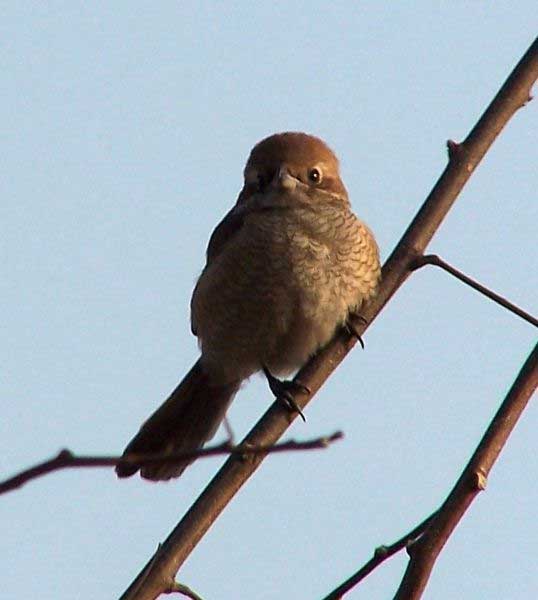Lanius bucephalus (*) Cladus: Eukaryota Name Lanius bucephalus Temminck & Schlegel, 1845 Reference Fauna Japonica p.39 pl.14 Vernacular names The Bull-headed Shrike (Lanius bucephalus) is a passerine bird of eastern Asia belonging to the shrike family Laniidae. It is 19-20 cm (approx. 7.48-7.9 inches) long. The male has a brown crown, white eyebrow and black mask. The back is grey-brown while the wings are dark with a white patch. The flanks are rufous and the rest of the underparts are whitish with fine barring. Females are similar but duller and browner with a brown mask and no white wing-patch. The species has harsh grating and chattering calls and will also mimic other birds. It breeds in north-east China, Korea, Japan and far-eastern Russia (Ussuriland, Sakhalin and the Kuril Islands). Northern birds migrate south for the winter with a few reaching southern China. Vagrants have been recorded in Taiwan, Hong Kong and Vietnam. The isolated race sicarius is found only in the mountains of Gansu Province in west-central China. Open habitats such as farmland and woodland edges are preferred. It also visits parks and gardens in urban areas. It sits on a prominent perch, waiting for prey to pass by. It feeds mainly on insects such as beetles and crickets but also preys on lizards and crustaceans. The nest is built among bushes or bamboo. Two to six eggs are laid. They are incubated for 14 to 15 days and the young birds fledge 14 days after hatching. References * Brazil, Mark A. (1991) The Birds of Japan. Christopher Helm, London. Source: Wikipedia, Wikispecies: All text is available under the terms of the GNU Free Documentation License |
|

